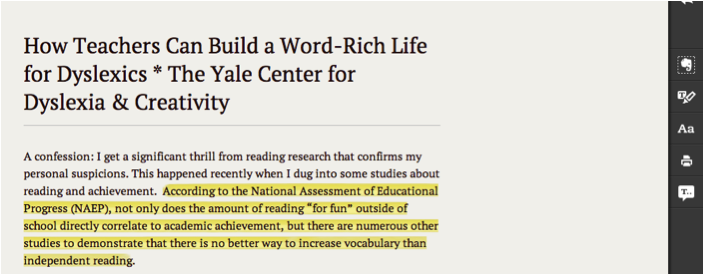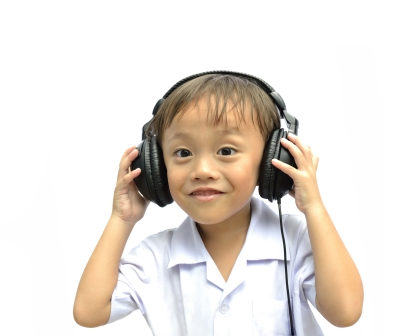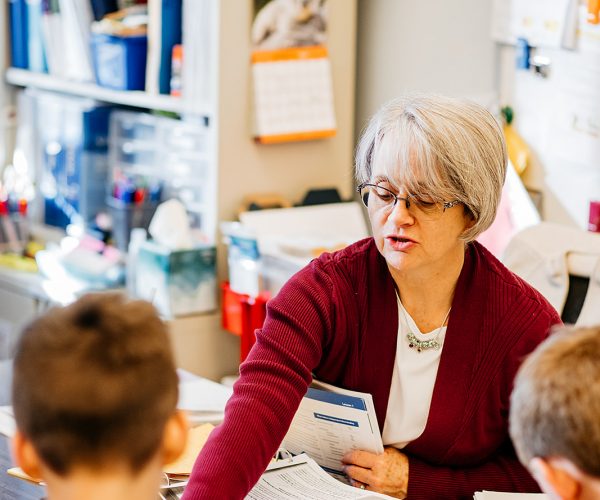
Reading: Just Do It!
May 16, 2014
Using Technology to Focus Learning
May 21, 2014
So what are ways teachers and parents can provide listening options to children who experience reading difficulty? The following is an outline of Redford’s ideas from research, as well as practices used at Springer School and Center:
Read Aloud: There are few things as powerful for encouraging a love of reading as a well-read story. It is never too early to start reading books to ALL children. ACTIVE read-aloud (dialogic reading) engages children in content, and questions what they are thinking, seeing and hearing as the book is read. Reading aloud also helps children develop the building blocks of reading comprehension. Students are able to discover new vocabulary, formulate predictions, and make outside connections. Listening to books read aloud allows students to have access to stories that are out of their reading range but within their comprehension zone. Even the most rigorous high school English teachers understand the power and potential of reading aloud to their classes. It also gives teachers an opportunity to model oral reading skills like fluency, proper pronunciation, and oral expression. These practices serve all students, but they are critical to those with dyslexia.
Recorded Books: (Learning Ally) Listening to audiobooks is a way to deliver words and ideas to a child who has limited access to an adult reader. Recorded books are wonderful, particularly when authors or professional actors read them. Listening to stories being read aloud by master storytellers goes a long way toward cultivating a love of literature. Teaching children to actively engage with this form of reading can provide a vehicle for accessing content, either for pleasure or academic purpose. This can be accomplished by having the child read along with the book as it is being read to them. The child actively engages by marking main ideas and story elements, and/or jotting down important information, as the book is read.
Text-to-speech: Today there are many options for providing any text document (including textbooks, storybooks and novels) in a text-to-speech format. Kurzweil 3000 and Read-Outloud are two of those options. These software options will read aloud any text scanned or “dropped” into the application. Bookshare is a vehicle for ease of access to both textbooks and trade books that can be downloaded in text format, removing the need to scan lengthy text.

Again, teaching children how to interact with this form of reading is critical in the learning process. Highlighting main ideas, supporting details, vocabulary, character traits, etc, as well as writing note summaries in the software, actively engages students in focused learning. Redford notes that students benefit when they visually track with the reader as much as possible. “Reading along” gives the listening student an increased exposure to the look of words, and makes explicit the process of converting letter combinations to sounds.
While this post may appeal to teachers to find alternate methods for our children to access the curriculum, this is also intended to empower parents with the knowledge to begin to encourage exploring the world of words with the ears as well as the eyes. If this practice becomes second nature to a child with a life-long language-based learning disability such as dyslexia (reading learning disability), in most cases, vocabulary development will be commensurate with same age peers.
Blogger Barbara Hunter, MEd, shares her expertise in the use of technology to support learning. If you have questions, please contact Barbara at .
Image courtesy of arztsamui at FreeDigitalPhotos.net



